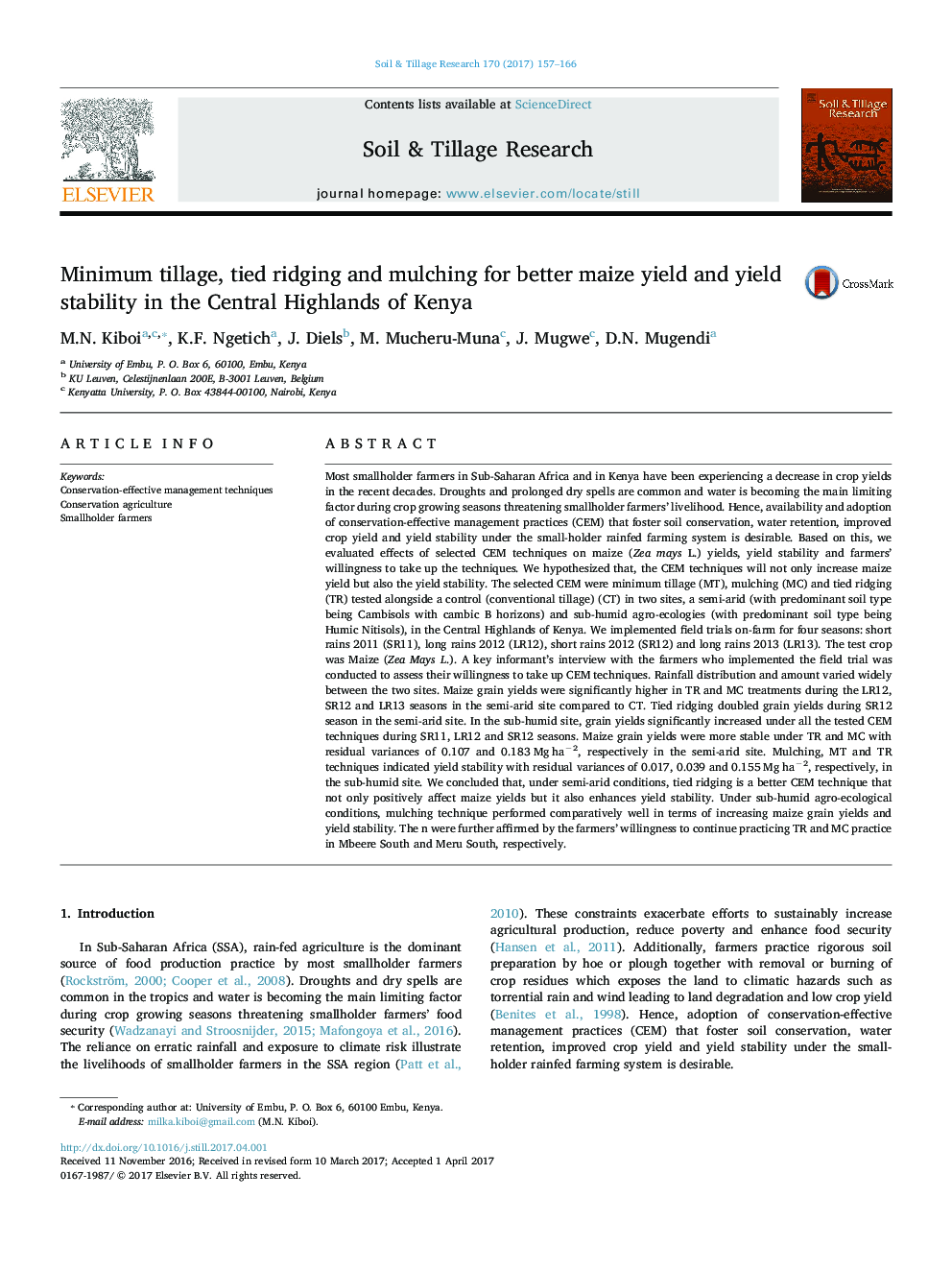| کد مقاله | کد نشریه | سال انتشار | مقاله انگلیسی | نسخه تمام متن |
|---|---|---|---|---|
| 4927526 | 1431833 | 2017 | 10 صفحه PDF | دانلود رایگان |
- Conservation-effective management techniques increases maize (Zea Mays L.) and yield stability.
- Tied ridging led to highest yields and yield stability in semi-arid site.
- Mulching enhanced grain yields and yield stability in sub-humid site.
- On-farm trials provide suitable platforms for uptake of agricultural techniques.
Most smallholder farmers in Sub-Saharan Africa and in Kenya have been experiencing a decrease in crop yields in the recent decades. Droughts and prolonged dry spells are common and water is becoming the main limiting factor during crop growing seasons threatening smallholder farmers' livelihood. Hence, availability and adoption of conservation-effective management practices (CEM) that foster soil conservation, water retention, improved crop yield and yield stability under the small-holder rainfed farming system is desirable. Based on this, we evaluated effects of selected CEM techniques on maize (Zea mays L.) yields, yield stability and farmers' willingness to take up the techniques. We hypothesized that, the CEM techniques will not only increase maize yield but also the yield stability. The selected CEM were minimum tillage (MT), mulching (MC) and tied ridging (TR) tested alongside a control (conventional tillage) (CT) in two sites, a semi-arid (with predominant soil type being Cambisols with cambic B horizons) and sub-humid agro-ecologies (with predominant soil type being Humic Nitisols), in the Central Highlands of Kenya. We implemented field trials on-farm for four seasons: short rains 2011 (SR11), long rains 2012 (LR12), short rains 2012 (SR12) and long rains 2013 (LR13). The test crop was Maize (Zea Mays L.). A key informant's interview with the farmers who implemented the field trial was conducted to assess their willingness to take up CEM techniques. Rainfall distribution and amount varied widely between the two sites. Maize grain yields were significantly higher in TR and MC treatments during the LR12, SR12 and LR13 seasons in the semi-arid site compared to CT. Tied ridging doubled grain yields during SR12 season in the semi-arid site. In the sub-humid site, grain yields significantly increased under all the tested CEM techniques during SR11, LR12 and SR12 seasons. Maize grain yields were more stable under TR and MC with residual variances of 0.107 and 0.183 Mg haâ2, respectively in the semi-arid site. Mulching, MT and TR techniques indicated yield stability with residual variances of 0.017, 0.039 and 0.155 Mg haâ2, respectively, in the sub-humid site. We concluded that, under semi-arid conditions, tied ridging is a better CEM technique that not only positively affect maize yields but it also enhances yield stability. Under sub-humid agro-ecological conditions, mulching technique performed comparatively well in terms of increasing maize grain yields and yield stability. The n were further affirmed by the farmers' willingness to continue practicing TR and MC practice in Mbeere South and Meru South, respectively.
Journal: Soil and Tillage Research - Volume 170, July 2017, Pages 157-166
